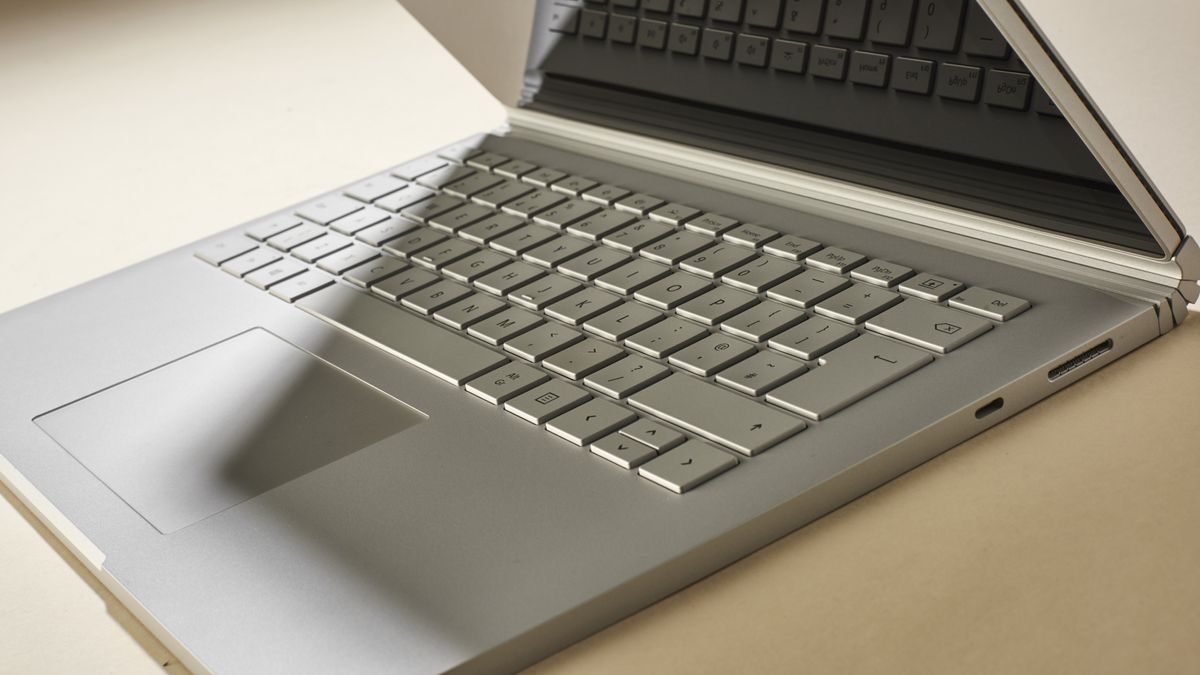

MORE: Best 2-in-1s (Laptop/Tablet Hybrids) Or you could give a presentation in this reverse mode if you don't want the keyboard showing. If you want to draw on the display with it slightly elevated, you can easily reinsert the display/clipboard so that it's facing away from the keyboard and push it down toward the deck. The good news? The "muscle wire locks" Microsoft employs are quite secure When I lifted the system by its display, I felt very confident that it would not detach. (You'll be asked to close those apps.) Makes sense, but it seems like an unnecessary burden for the integrated graphics version of the Surface Book. The discrete-graphics version of this device can't continue to run apps that use the dedicated GPU when detached, because the graphics card is located in the base. But there's a reason for Microsoft's unique approach here. Other 2-in-1 devices, including the Surface Pro 4, make it easier to switch modes - you just pull the magnetically connected top and bottom pieces apart. To enter this mode, you press and hold an eject button on the keyboard and wait a second or two until a "Ready to Detach" notification appears on the screen before you remove the slate. Yes, you can use it to watch movies and play games - if you want to hold a huge 13.5-inch display - but it's really designed for taking notes and drawing with the included pen. It's telling that Microsoft calls the removable slate portion of the Surface Pro a clipboard rather than a tablet. My only other nitpick with the design is that the audio jack is located in the top part of the design, which looked awkward with my headphone wire dangling. The left side of the Surface Book houses two USB 3.0 ports and an SD card reader, while the right side has a Mini DisplayPort and a Surface Connect port, which is for power and connecting to the optional dock.


 0 kommentar(er)
0 kommentar(er)
